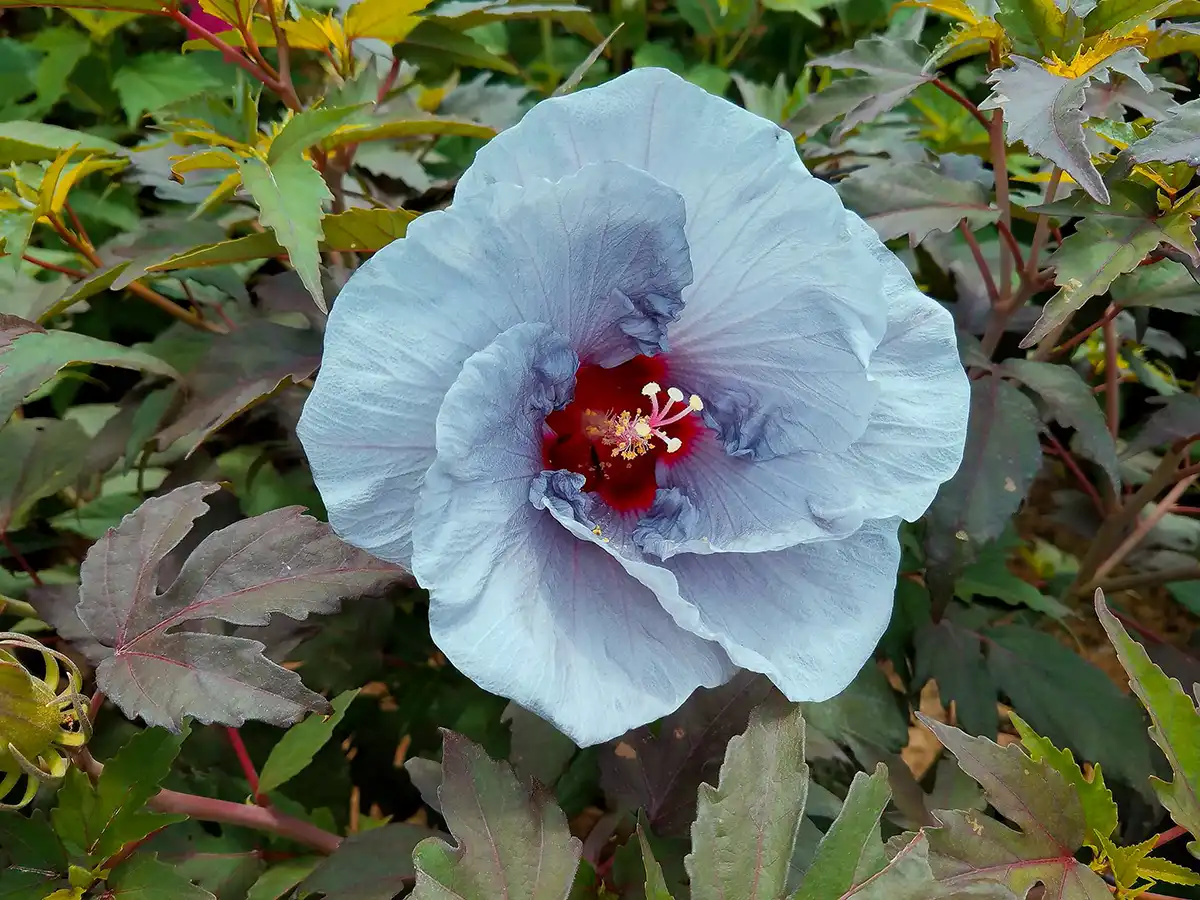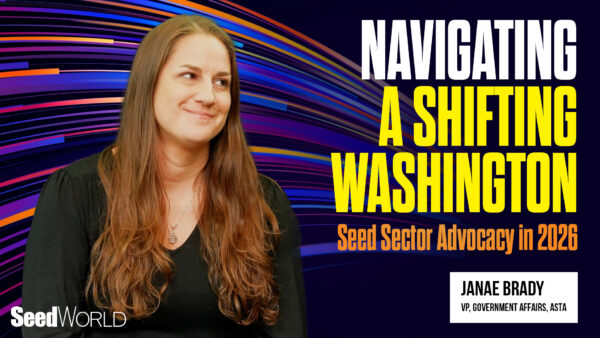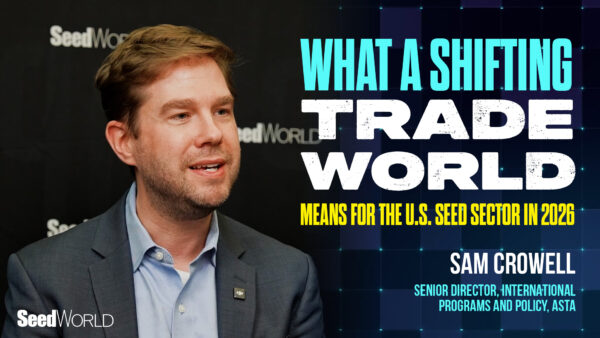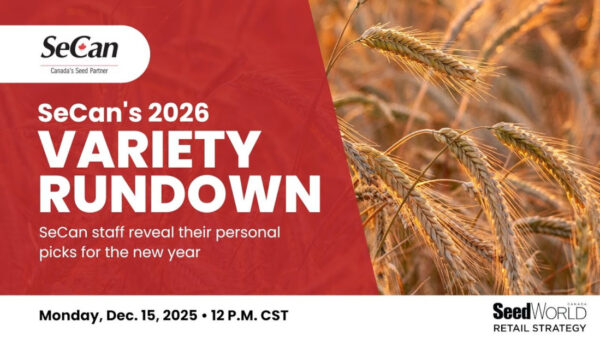What started as a hobby turned into a breeding program. Now, Texas A&M AgriLife plant physiologist and breeder Dariusz Malinowski is being recognized for his work in winter-hardy hibiscus.
in the north-central part of Texas, almost as close to Oklahoma as you can get, there’s a little town called Vernon. About three hours away from Oklahoma City and Dallas, Vernon, Texas isn’t known for being large — in the last census, the population of Vernon listed 11,000 people — but, it is known for being vibrant for a slew of reasons.
Most recently? Hundreds of winter hardy hibiscuses line Vernon’s streets as well as businesses. Now, you might expect these winter-hardy hibiscuses to be in the usual colors: white, red and pink. However, Vernon has some special varieties of hibiscuses lining the streets — colors ranging from blue to silver and from maroon to lavender.
The Drag, Vernon’s mainstreet, is usually known for hosting festivals, including the Summer’s Last Blast, which is a large antique car show for that lasts four to five days, Mayor Doug Jeffrey says. However, they’re working on a new idea.
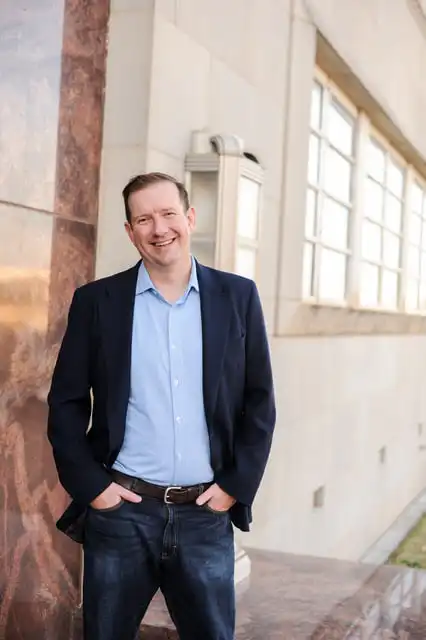
“We’re excited to see new varieties come out of the Texas A&M Agrilife Center,” Jeffrey says. “When you think of tulips, you think of Holland. Well, I want Vernon to be the place people think of when they think of hibiscuses.”
These colorful hibiscuses didn’t come out of nowhere — they were bred with meticulous care, not by a breeder, but by a plant physiologist.
Hobby Turned Breeding Program
“I had the opportunity to come to Texas A&M Agrilife on a postdoctoral position in forage agronomy and physiology,” says Dariusz Malinowski, a plant physiologist and breeder at Texas A&M Agrilife. “By profession, I’m not a plant breeder, but I could use my knowledge in plant physiology in my cool-season forage grass breeding program. Hibiscus breeding was actually something that I started in my backyard.”
Malinowski says his initial desire to breed hibiscus came from the idea that he wanted some colorful flowers in his backyard. He thought there was potential in making a winter-hardy hibiscus with a color other than red, pink and white.
“One of my colleagues, the late Steve Brown who was the former director of the Texas A&M AgriLife Foundation Seed, saw a photo of my flowers in my office,” he says. “I jokingly said ‘I have very nice flowers, right?’ Brown thought that my winter-hardy hibiscuses could have huge value as a breeding program.”
But this joke led to something bigger than Malinowski had imagined.
From there, Malinowski met with Brown and learned how breeding programs worked in the United States and at Texas A&M Agrilife, and if he’d be willing to add hibiscus breeding as a part of his program.
“Initially, I expanded the amateur hibiscus breeding to backyards of my friends, Steve Brown and Dr. William Pinchak of Texas AgriLife,” he says. “It became a part of my program in 2010, and we planted the official plots in Vernon.
“Every year since then, we plant about 2,000 hybrid winter hardy hibiscuses, and every fall we pick around 30-40 hybrids.”
From there, the hybrids are disclosed to the Texas A&M Office of Technology Commercialization. Malinowski says in 2018, J Berry Nursery of Grand Saline, Texas, commercialized the first eight cultivars under the series trademark name Summer Spice Hibiscus, and they’ve found some good success with it. Currently, there are 30-40 lines in evaluation for potential commercialization.
However, Malinowski says getting to this point only seemed “easy” because of how much access they’ve had to the germplasm he created.
“In 2010, I wanted to create new colors for winter-hardy hibiscus,” he says. “My dream was of a blue hibiscus, and within three years, we were able to breed a purple-blue hibiscus. Based on that plant, we were able to develop around 20 blue flowering lines.”
He says these flowers range anywhere from silver to blue to dark purple.
“Two are on the market as of 2018, Bleu Brulee and Cordon Bleu, and there are plenty of other blue lines in evaluation,” Malinowski says. “The first blue cultivar we developed was in 2012 called the Blue Angel. It was blue in shade, but in the sunlight, it was more purple-ish.”
While working toward this blue color, Malinowski says the first different color they actually hit was a really light purple.
“When I first saw Fantasia (a lavender-colored) and Plum Crazy (a plum-colored) winter-hardy hibiscus cultivars on the market, I brought them into the breeding program because I thought we could get into the blue color,” he says. “Eventually by repeated crossing them with our hybrids, we were able to get the blue color.”
Malinowski says it took crossing four winter-hardy hibiscus species to get the first variation, and then he started adding new genetic materials. By adding new genetic materials and getting new variations, the program saw new colors develop.
An easier color they were able to develop was a maroon color — perfect for Texas A&M.
“We have shades of magenta, silver colors, dark purple colors and any shade of red that you could ever want,” he says.
Is Color a Big Deal to Retailers?
Despite the success Malinowski has found in breeding so many different colors of winter-hardy hibiscus, he’s found that color isn’t always the biggest things companies look for when marketing winter-hardy hibiscus.
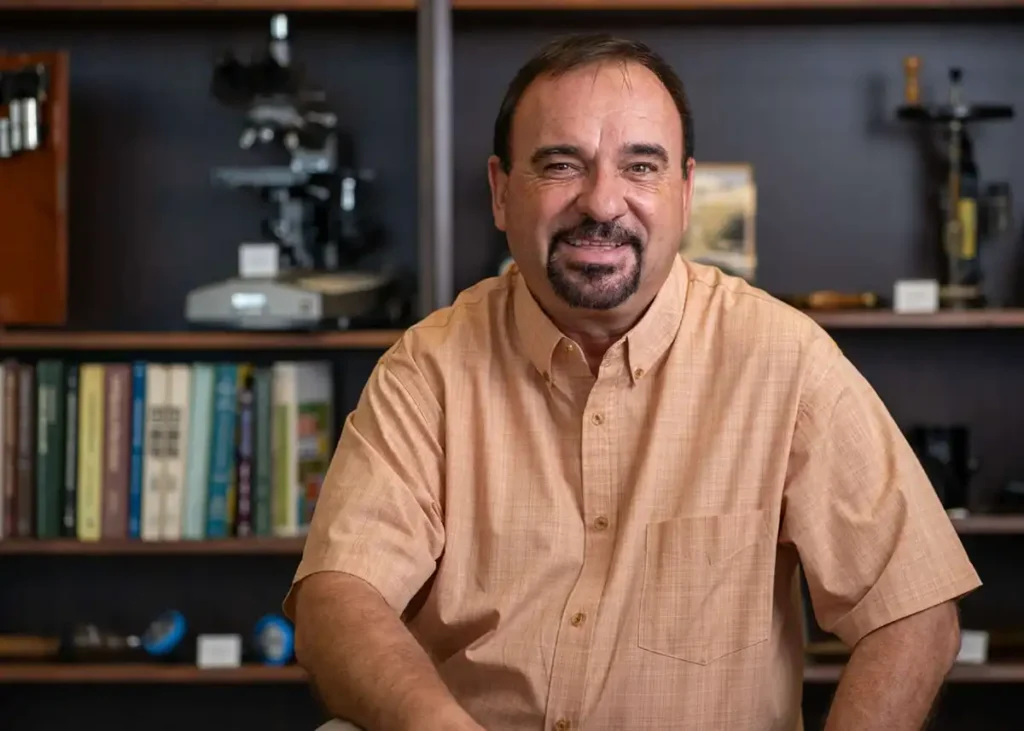
“We started working with commercial partners, and eventually, we had to shift our view of how to breed new varieties,” he says. “We learned that commercial partners don’t necessarily care about the new colors we made. Instead, they look for different characteristics like plant growth habit, foliage color, shape and flower petal appearance.”
While focusing on color, Malinowski says they had to start considering other characteristics and different traits, such as making the plants dwarf or compact.
“Our first hybrids had beautiful novel flower colors, but their shapes and appearances other than the color weren’t fantastic,” he says. “We had to shorten the plants about two to three feet to make them compact.”
Now, most of the hybrids they produce are compact and able to grow in a pot.
“After we adjusted the size, we could introduce the color,” Malinowski says.
From there, he learned commercial partners wanted more: new foliage colors and flower petal shapes.
“They want to see different leaf color, ranging from purple to red leaves,” Malinowski says. “We’re starting to consider adding that into our program, which means we’ll focus on flower and foliage color.”
In the meantime, he says they’ve been working hard to come up with new colors and petal shapes.
“We’re working now on a new series, where the flowers will have different colors, but they’ll have serrated edges on the petals,” Malinowski says. “We don’t have those in blue yet, but we’re working on it.”
Besides the serrated petals, they’ve been working on a trait to make the winter-hardy hibiscus flowers seem like it has more petals.
“The winter-hardy hibiscus flower only has five petals,” he says. “Tropical hibiscus can have many more petals, but not winter hardy. We’re trying to intensify the trait so that there are different levels to the petals. That way, it makes the impression that there are more petals in the winter-hardy hibiscus flower. So instead, they’ll look more like a peony flower.
“As the program continues, we’ll start having a hibiscus that looks completely different and new!”
As for new colors, Malinowski has his eyes set on orange.
“It’s not impossible, but it’s certainly more difficult than developing the blue color,” he says. “We probably won’t ever have a completely orange color, but we’ll get close. After that, we’d really like to create a yellow-ish color, which is also difficult to create. Once we get the pigment, we can try to establish it.”
“At the beginning, it took around three to four years to come close to whatever we wanted,” Malinowski says. “It’s much easier now because we have thousands of hybrids with different traits. We usually have the potential patterns to get a new trait easier, rather than at the beginning when we had nothing. But it depends!”
Malinowski says one reason his program comes out with novel colors is because at the beginning of his program, he just worked on creating as many hybrids as he could.
“Now, there’s a lot of work every year for this, but we aren’t putting as much work as we had to 10 years ago,” he says.
Now, the only restrictor he has: space.
“We’ve just about used all of our space,” Malinowski says. “We don’t want to slow down and quit producing new hybrids, but we’re going to start making fewer but more focused crosses every year.”
Now, with the excitement of so many new varieties of winter-hardy hibiscus popping out, Vernon wants to celebrate it.
Community Celebration
This year, Mayor Jeffrey is working to put together a festival similar to their Summer’s Last Blast festival; however, this one is specifically only around the winter-hardy hibiscus.
“If you think about a diamond in the rough, these winter-hardy hibiscuses are ours,” he says.
Mayor Jeffrey uses an analogy of a farmer who’s not making any headway on a farm and decides to sell it to find other solutions. But, the next farmer who buys it finds a diamond.
“That’s the hibiscus,” he says. “We have something that was born and bred in Vernon, and it kind of represents a person from Vernon in a way. We often have droughts here, and we’re used to a tough climate. All those things make people tough, and you can’t get more Texan than that. The hibiscus is tough and it’s able to stand a harsher climate ‚Ķ If it can grow here, it can grow anywhere.”
“We’re excited that Vernon is promoting itself as the hibiscus capital of the world,” Malinowski says. “The rose capital of the world is in Tyler, Texas, and Vernon wants to do something similar.”
Malinowski says Texas A&M AgriLife gave them around 600 seedlings of the hibiscus this past spring, that were extra plants from the growing season.
“It’s so fun getting flower donations from Texas A&M Agrilife, because it’s a mystery,” Mayor Jeffery says. “You never know what color you’re going to get.”
“Vernon planted them in parks, museums, churches, outside of businesses and all along the Drag,” Malinowski says. “We had so many visitors over the summer to see the plants blooming, it was so intense, but it’s good to meet a different audience.”
One reason Malinowski believes people gravitate to the hibiscus is because they see the fields blooming in the summer, and they want to know what it is that looks so good.
“Once established, the winter-hardy hibiscus grows great,” he says. “I have some at my house that I planted between 2008-2009 that I don’t water because they’re outside my fenced area, but they’re still surviving and prospering. They’re really good at growing in drought.”
As the festival, Mayor Jeffrey is excited.
“During Summer’s Last Blast, we shut down the Drag, and all of our hotels and restaurants are full,” he says. “We shoot from a population of 11,000 to a population of 30,000 during those days. I want to take that model and build a hibiscus festival around it.”
Mayor Jeffrey says to think about a fun festival right before school starts back.
“I don’t think it’ll start as large as Summer’s Last Blast, but I want to build it up,” he says. “I’m thinking it would be great to have a parade with a winter-hardy hibiscus queen and king.
“Agritourism speaks to people,” Mayor Jeffrey says. “A lot of rural communities are shriveling up, and if you don’t have anything to highlight a town, it’ll disappear. I think the hardy hibiscus can do so much for us.”


